TETRAHYDROZOLINE - OPHTHALMIC
PHONETIC PRONUNCIATION: (TEH-truh-hi-DROZE-oh-leen)
COMMON BRAND NAME(S): Opti-Clear, Visine
GENERIC NAME(S): tetrahydrozoline HCl
Uses
USES: Tetrahydrozoline is a decongestant used to relieve redness in the eyes caused by minor eye irritations (e.g., smog, swimming, dust, or smoke). It belongs to a class of drugs known as sympathomimetic amines. It works by temporarily narrowing the blood vessels in the eye. Some brands of tetrahydrozoline eye drops may contain lubricants. Lubricants help protect the eyes from more irritation and dryness.
How to use TETRAHYDROZOLINE - OPHTHALMIC
HOW TO USE: Follow all directions on the product package, or use as directed by your doctor. If you are uncertain about any of the information, consult your doctor or pharmacist. To apply eye drops, wash your hands first. To avoid contamination, do not touch the dropper tip or let it touch your eye or any other surface. Remove contact lenses before applying the eye drops. Wait at least 10 minutes after using this medication before inserting contact lenses. Before using, check this product visually. Do not use if the liquid has changed color or is cloudy. Discard the medication away from children and pets. Use this medication in the affected eye(s) up to 4 times a day as needed or as directed by your doctor. Tilt your head back, look upward, and pull down the lower eyelid to make a pouch. Hold the dropper directly over the eye and place 1 drop into the pouch. Look downward and gently close your eyes for 1 to 2 minutes. Place one finger at the corner of the eye near the nose and apply gentle pressure. This will prevent the medication from draining away from the eye. Try not to blink and do not rub the eye. Repeat these steps if your dose is for more than 1 drop and for the other eye if so directed. Do not rinse the dropper. Replace the dropper cap tightly after each use. If you are using another kind of eye medication (e.g., drops or ointments), wait at least 5 minutes before applying other medications. Use eye drops before eye ointments to allow the eye drops to enter the eye. Overuse of this type of medication may result in increased eye redness (rebound effect when drug wears off). If this occurs, tell your doctor. Do not use this medication for longer than 3 to 4 days at a time. If your condition persists or worsens after 72 hours, or if you think you may have a serious medical problem, stop using this medication and seek immediate medical attention.
Side Effects
Precautions
Interactions
Overdose
Images
Reviews
Faq for TETRAHYDROZOLINE - OPHTHALMIC
Tetrahydrozoline Ophthalmic is a medication used to relieve redness in the eyes caused by minor eye irritations, such as allergies, fatigue, or dryness.
Tetrahydrozoline Ophthalmic works by narrowing the blood vessels in the eyes, which reduces redness and swelling.
No, Tetrahydrozoline Ophthalmic should not be used for more than a few days without consulting a doctor. Prolonged use can lead to a condition called rebound redness, where the redness worsens or comes back after discontinuing the medication.
Yes, Tetrahydrozoline Ophthalmic can be used by contact lens wearers. However, it is advised to remove the contact lenses before using the medication and wait at least 10-15 minutes before reinserting them.
Common side effects include temporary stinging or burning sensation in the eyes, dryness, blurred vision, and increased sensitivity to light. If any severe or persistent side effects occur, it is advisable to seek medical attention.
Tetrahydrozoline Ophthalmic is generally safe for children older than 6 years. However, it is recommended to consult a doctor or pediatrician before using the medication in children.
Certain medications, such as MAO inhibitors and beta-blockers, may interact with Tetrahydrozoline Ophthalmic. It is important to inform your doctor about all the medications you are taking and any medical conditions you have before using this medication.
Tetrahydrozoline Ophthalmic should be stored at room temperature, away from light and moisture. It should be kept out of reach of children.
No, Tetrahydrozoline Ophthalmic should not be used for treating eye infections. It is only indicated for relieving redness caused by minor eye irritations. Eye infections require proper medical treatment.
Disclaimer
IMPORTANT: HOW TO USE THIS INFORMATION: This is a summary and does NOT have all possible information about this product. This information does not assure that this product is safe, effective, or appropriate for you. This information is not individual medical advice and does not substitute for the advice of your health care professional. Always ask your health care professional for complete information about this product and your specific health needs.
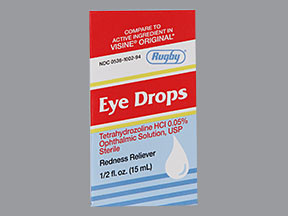
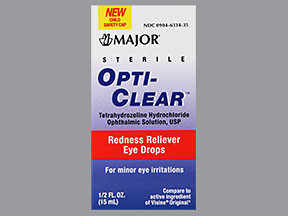


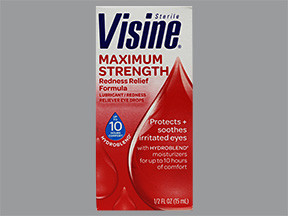
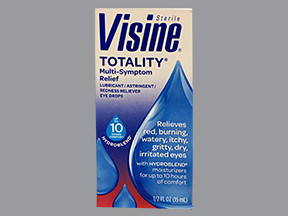
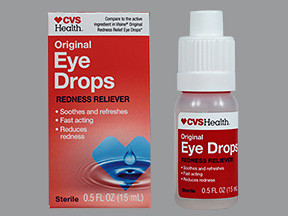
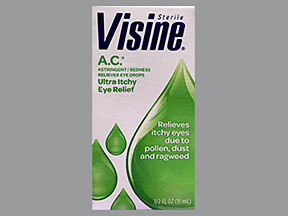
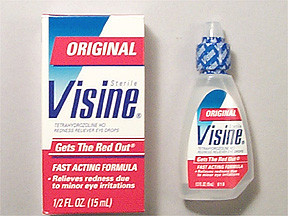
No Reviews Yet